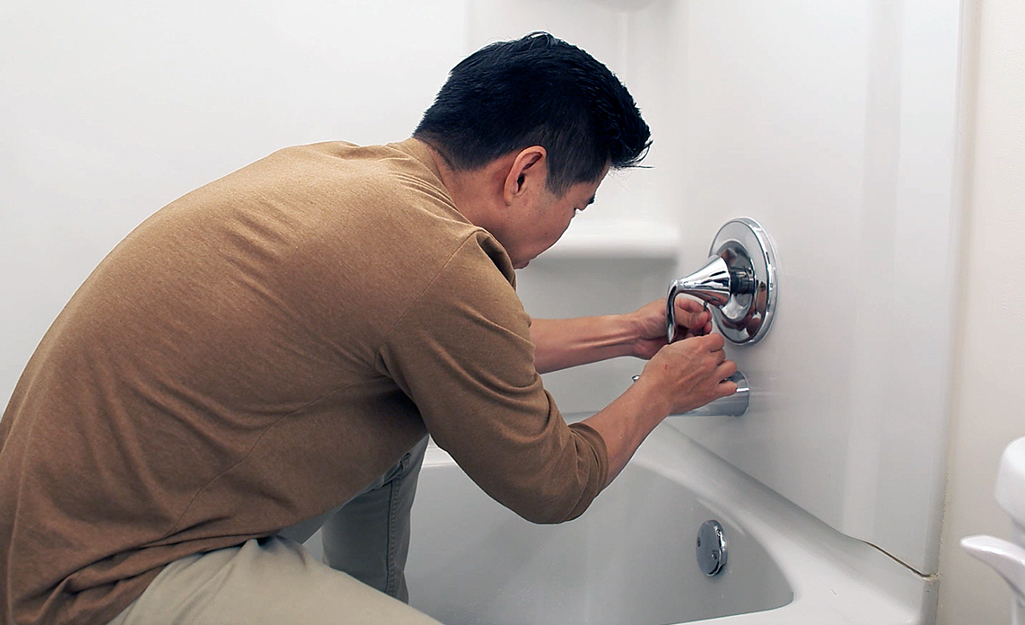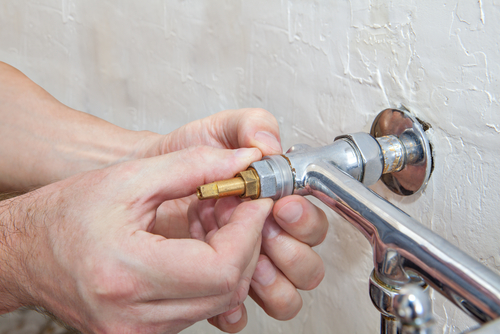They are making a number of great points about Should I Repair or Replace a Leaky Faucet? as a whole in this great article further down.

Leaking faucets could feel like a minor inconvenience, yet their effect goes beyond simply the aggravation of the sound. From drainage to incurring unneeded monetary prices and health and wellness risks, neglecting a dripping tap can lead to different consequences. In this short article, we'll explore why it's crucial to address this usual household problem without delay and effectively.
Waste of Water
Ecological Influence
Dripping taps add significantly to water wastefulness. According to the Environmental Protection Agency (EPA), a single faucet dripping at one drip per secondly can lose greater than 3,000 gallons of water annually. This not only stress water resources but also affects communities and wildlife dependent on them.
Step-by-Step Overview to Dealing With a Dripping Tap
Tools Required
Prior to trying to take care of a dripping tap, collect the required devices, including an adjustable wrench, screwdrivers, substitute parts (such as washers or cartridges), and plumber's tape.
Usual Faucet Issues and Their Solutions
Identify the kind of faucet and the certain problem creating the drip. Common problems include worn-out washing machines, corroded valve seats, or faulty O-rings. Refer to maker instructions or on the internet tutorials for step-by-step assistance on repairs.
Financial Expenses
Raised Water Bills
Beyond the ecological influence, trickling faucets can inflate water expenses considerably. The accumulated wastage over time translates into higher energy expenditures, which can have been stayed clear of with prompt repair services.
Possible Residential Or Commercial Property Damages
Additionally, extended dripping can lead to harm to fixtures and surfaces bordering the faucet. Water accumulation can create staining, deterioration, and even structural issues if left neglected, resulting in added repair work prices.
Health and wellness Concerns
Mold And Mildew and Mold Growth
The consistent presence of wetness from a trickling faucet produces an ideal atmosphere for mold and mildew and mold growth. These fungi not just compromise interior air quality however additionally pose health and wellness dangers, specifically for people with respiratory conditions or allergies.
Waterborne Illness
Stationary water in trickling taps can come to be a breeding place for microorganisms and various other microorganisms, boosting the danger of waterborne illness. Contaminants such as Legionella bacteria grow in stationary water, possibly leading to serious ailments when consumed or inhaled.
Do it yourself vs. Expert Repair work
Pros and Cons of Do It Yourself Repair Service
While some may try to fix a trickling faucet themselves, do it yourself repair services come with their very own collection of difficulties. Without appropriate expertise and devices, DIY attempts can aggravate the problem or bring about incomplete fixings, prolonging the issue.
Advantages of Hiring an Expert Plumber
Working with a professional plumber makes certain that the underlying cause of the leaking faucet is attended to efficiently. Plumbings possess the expertise and equipment to identify and fix tap concerns successfully, conserving time and lessening the danger of further damages.
Ecological Obligation
Private Contribution to Conservation
Taking duty for taking care of leaking faucets straightens with wider efforts towards water conservation and environmental sustainability. Every person's actions collectively make a substantial impact on maintaining precious sources.
Sustainable Living Practices
By focusing on prompt repair services and adopting water-saving routines, people contribute to lasting living methods that profit both present and future generations.
Preventive Measures
Routine Upkeep Tips
To prevent dripping faucets, do regular upkeep such as cleaning aerators, examining for leaks, and replacing worn-out parts quickly. Furthermore, think about setting up water-saving gadgets or upgrading to much more effective fixtures.
Significance of Prompt Repairs
Dealing with dripping taps as soon as they're noticed prevents more water waste and prospective damage, inevitably saving both water and money in the future.
Effect On Residential Property Value
Assumption of Well-Maintained Residential Property
Keeping a property in good condition, consisting of addressing upkeep concerns like trickling taps, improves its regarded worth and value amongst potential purchasers or occupants.
Impact on Resale Worth
Residences with properly maintained plumbing components, consisting of taps, command greater resale worths in the property market. Attending to trickling taps can contribute to a positive impression during home inspections and negotiations.
Verdict
Resolving a leaking faucet goes beyond plain comfort; it's a crucial action toward preserving water, decreasing financial expenses, and safeguarding wellness and home. Whether through do it yourself repairs or expert assistance, acting to fix leaking faucets is a little yet impactful means to promote accountable stewardship of sources and add to a healthier, much more sustainable future.
Why Are My Faucets Dripping (And Can I Fix it Myself)?
Causes of a Dripping or Leaking Faucet
Whether you’re hearing drops of water falling and hitting a sink, or noticing water ooze out from the base of the spout, you shouldn’t ignore a dripping or leaking faucet. And, the good news is, sometimes you can fix the problem yourself.
In this article, we’ll review a few common causes of dripping and leaky. We’ll also walk you through some basic ways to find the problem and handle it without calling anyone — and let you know when to call in a pro.
But, no matter what the cause, or whether you can handle it on your own, the sooner you address it, the better.
Each drip may be a tiny amount of water. But, they all add up quickly. According to the U.S. Geological Survey, one faucet losing one drop every 20 seconds — five a minute — wastes around a liter of water every day, and 173 gallons a year.
Add in more than one in your house, and it’s a lot of water to waste. So, we’ll help you get to the bottom of things quickly.
Four Reasons Your Faucet May Be Dripping
- Aerator is Damaged or Unseated
- Valve Seat is Corroded
- O Ring is Loose or Worn Out
- Part of the Assembly is Loose
Aerator is Damaged or Unseated
If you unscrew the end of your faucet, you’ll find the aerator. It’s the little stem piece with a screen on it that shuts off the water circulation.
If it’s damaged, or if it’s not sitting right, it will allow water to pass through.
Valve Seat is Corroded
Next is the valve seat, which is connected to the washer. If the washer wasn’t in place correctly, then it could have ground against the seat. Over time, this damages the valve seat.
The problem could also be corrosion: Over time, the part has worn out, and it’s now allowing water to pass through.
O Ring is Loose or Worn Out
Since the o ring is only a small rubber gasket, it’s a common reason why the faucet is dripping. You’ll find it at the base of the faucet, and it’s there to keep water from coming out where it’s not supposed to.
However, it’s common for the o ring to wear out over time. When it does, you’ll notice a drip.
Part of the Assembly is Loose
So far, we’ve looked at a few small, specific parts. But, the problem could be anywhere in the assembly if something’s out of place.
Even if a part isn’t damaged, over time, it may have become loose or dislodged. It could be the parts we mentioned, or the aerator at the tip of the faucet, the stem itself,
Can I Fix a Leaky Faucet Myself?
Depending on the problem, and how handy you are, there’s a chance you can fix a leaky faucet without calling a professional. But, you do run the risk of making the problem worse.
If it’s a small drip, you can certainly try a few troubleshooting tactics. We’ll walk you through them in a moment.
But, no matter what, your first step should be shutting off the water coming into the faucet. You should find a shutoff valve under the sink on the pipes leading to it. Turn each one clockwise until they close tightly.
Next, make sure you have the right tools for whatever you’re attempting. It’s tempting to make do with what you have. But, you need the right ones for a reason: You’re often dealing with small parts that can break if you handle them carelessly.
If you’re feeling confident, here are some places to start.
Items Near the Tip of the Faucet
A few of the parts we mentioned — particularly the valve seat and washer — are located at the tip of the faucet where the water comes out. They’re easy to access, making it a good place to start.
Check the O Ring
To check the o ring, you’ll need to take off the spout at the base. It’s easiest on kitchen sinks with long spouts, versus the smaller, bulkier base on most bathroom sinks.
Either way, this can be tricky, so do it carefully and don’t force anything. If it’s not coming right off, you’re much better off calling in a pro than possibly breaking something.
For a kitchen sink, there’s usually a nut or coupling assembly at the base of the spout. These often slide off easily without using any tools.
Once you’ve disassembled those parts, gently but forcefully twist off the spout.
Then, you can see the o rings. There should be two of the rubber gaskets on the base. If they look worn or damaged, replace them, and see if that solves the problem.

I'm very serious about What Causes Leaky Faucets & How To Fix Them and I am praying you enjoyed the new page. Make sure you take a moment to promote this blog if you liked it. Thanks a lot for being here. Return soon.
Comments on “Learning the Significance of Repairing a Leaking Faucet”